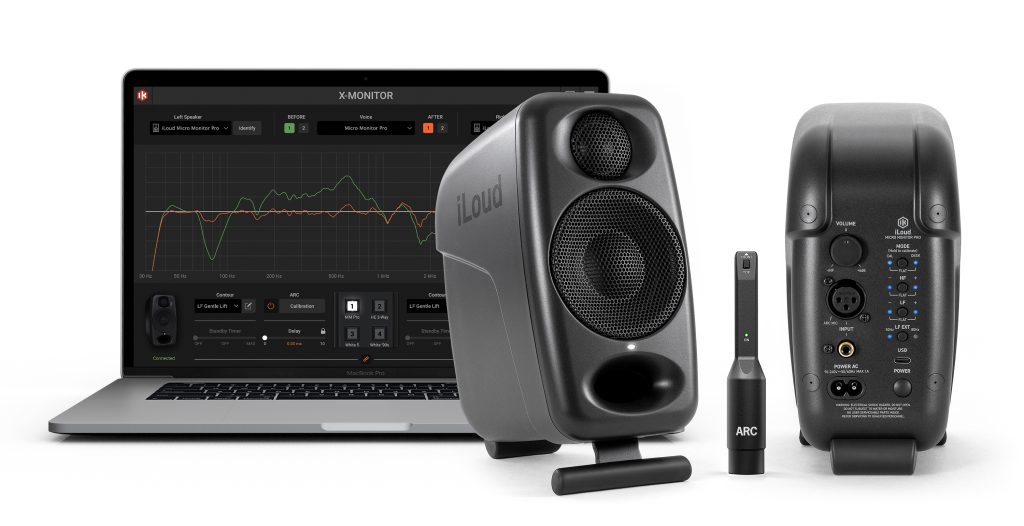
It’s not often that a company revisits one of its best-selling desktop audio monitors and dares to make a “Pro” version that’s actually worthy of the title. But IK Multimedia has done just that with their new iLoud Micro Monitor Pro—an evolution of its original iLoud Micro Monitor, which we reviewed and totally raved here about in late 2016. Back then, we praised their size-defying punch, crisp sound, and clever design. The Pro version keeps the same compact spirit, albeit slightly larger, but brings some seriously grown-up upgrades, including ARC (Automatic Room Correction) and better performance for those who need precision audio without scaling up their entire workspace.
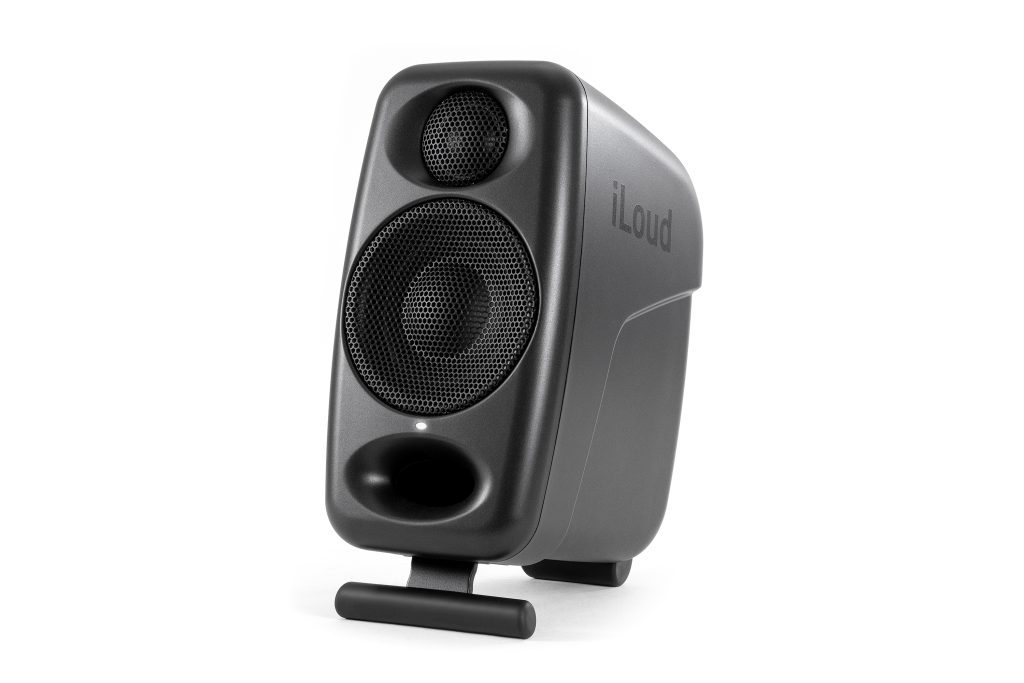
Familiar Frame, Serious Internals
Physically, the iLoud Micro Monitor Pro doesn’t deviate much from the “micro” formula. Each unit still fits neatly on your desktop (or on a stand), retains that familiar silhouette, and includes angled retractable rubber feet. But under the hood, things have matured. These aren’t just repackaged micro monitors—they’re re-engineered.
Gone is the master/slave setup—where all the smarts were housed in the left speaker and physically connected to the right via a 4-pin link cable. Each speaker is now self-powered and can be operated independently, offering 50W per side (that’s a full 100W total RMS, up from 50W before). The result? More headroom, tighter, bigger bass, and noticeably more clarity—especially when mixing more dynamic tracks or working in less-than-ideal rooms.
The woofer remains at three inches, but it’s been enhanced, now porting a custom-made composite cellulose fiber cone for better damping and a more natural sound. Although only cosmetic, its outer grille is now sleeker and slightly recessed.
The tweeter has been upsized by ¼ inch, now constructed with a 1-inch enhanced low-distortion silk-dome material, making for warmer, cleaner, and more natural highs.
The frequency response is 50 Hz to 20 kHz (+/-2 dB) and 42 Hz to 22 kHz (-10 dB)—slightly better on the low end. Size-wise, they measure 206 mm/8.11″ x 158 mm/6.22″ x 106 mm/4.17″—a little over an inch taller, just under an inch wider, and a little over 0.5” deeper.
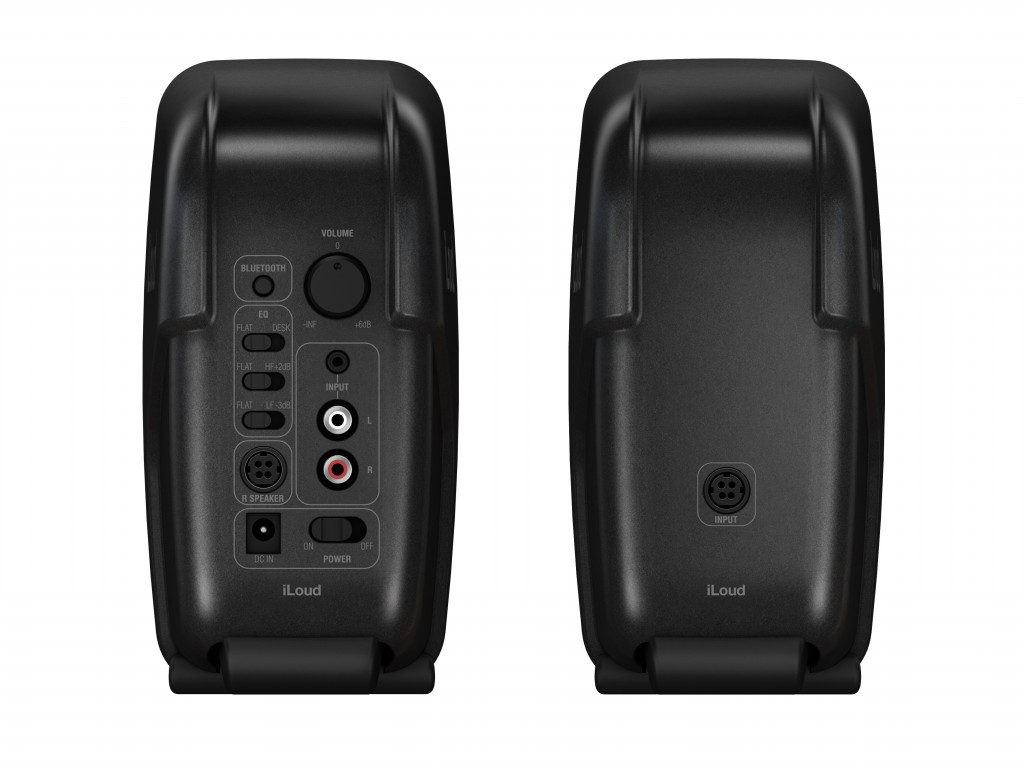

Back Panel Enhancements
On top of that, the rear panel has swapped out simple toggles for soft-push buttons with indicator LEDs, giving the Pro version a more modern and tactile interface. EQ adjustments are more granular, too. On the original iLoud Micro Monitor, options were limited—you could only adjust the high-frequency (HF) shelf at 8kHz and the low-frequency (LF) shelf at 100Hz to either flat or -3dB, using basic toggles.

With the Pro version, the updated rear-panel controls offer expanded onboard tuning options right out of the box:
- The HF shelf can now be set to -2dB, flat, or +2dB, letting you slightly tame or brighten the treble to better suit your environment.
- The LF shelf now ranges from -3dB to +2dB, offering more control over bass response.
- There’s also a Low Frequency Extension button, which adjusts the bass roll-off from the default 50Hz to 80Hz—ideal for smaller rooms or when using a subwoofer.
Aiming for Accuracy
There’s one button you may have noticed I didn’t mention yet—and that’s because I’ve been saving the best for last.
On the original non-Pro version, there was a simple EQ toggle that could be set to Flat or Desk. The Desk mode helped compensate for acoustic changes caused by placing the monitors on a reflective surface—like your desk.
The new Pro models still offer the Desk option, but they take it a step further with the addition of a CAL setting—short for Calibration (top right button). And this is where things get interesting.
The Pro version adds full room calibration via IK Multimedia’s ARC (Automatic Room Correction) system. Using the free X-MONITOR advanced contour software on your Mac or PC, you can measure your room’s acoustics and tailor the speaker’s output to your exact space. The process is simple: connect the speaker to your computer via USB-C, plug in the ARC Measurement Microphone to the XLR calibration input (cable not included), and let the software wizard guide you through the rest.

2-Minute Calibration
With a few clicks and three subsequent repositioning of the mic, in about two minutes, the software listens to how sound travels in your space at those various capture points—factoring in reflections, speaker placement, furniture, and where you sit. It then automatically adjusts the internal DSP to compensate for uneven room acoustics, bass build-up, or weird room shapes.

And as a bonus, X-MONITOR also lets you emulate other types of monitors with 15 factory presets—like bookshelf speakers or even simple earbuds—so you can preview how your mix will sound on different devices.
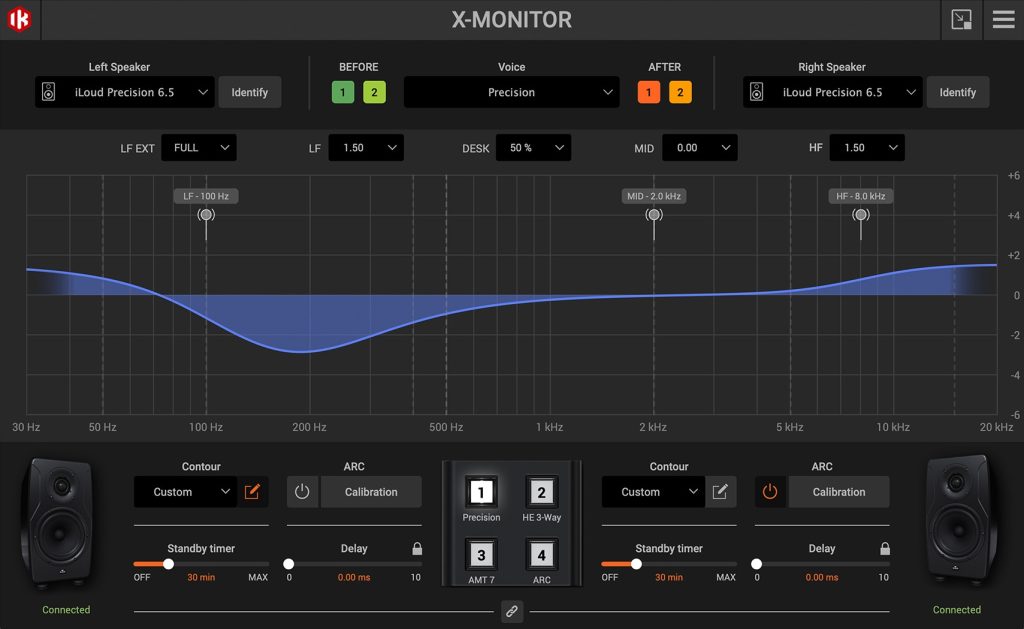
You can visualize the frequency response before (in green) and after calibration (in orange), and even make further manual contour and other adjustments to suit your own tastes. You can save and store settings so you can easily recalibrate if you change locations or speakers.
Once calibration is complete, the CAL button on the back becomes active, allowing you to switch between Flat, Desk, and your new Calibrated profile—no computer required.
Let’s be clear—this isn’t a magic fix for a fundamentally bad room. But for home studios, temporary setups like Airbnb’s, or less-than-ideal spaces, it’s a game-changer that lets you trust what you’re hearing, wherever you’re working.
No More Brick Adapter
Another welcome mod is the addition of a built-in AC power supply, allowing for the use of a direct-connect AC cable rather than the need for an extra power brick. One less thing to carry around.
The Trade-Offs
Some of the “Pro” refinements come with a cost—mainly, connectivity concessions. Sadly, Bluetooth is gone, and so is the handy 3.5mm aux input. While these were ideal for casual listening and quick mobile use, I hazard a guess that it doesn’t really align with a studio-first mindset. Instead, you get a balanced XLR—which may require an audio interface like an iRig Pro—and an unbalanced RCA input. The USB-C port, which would have been mighty handy for directly connecting to your Mac or PC, is strictly reserved for running X-MONITOR software and for firmware updates. Serious inputs for serious work—or perhaps only so much can fit under the hood.
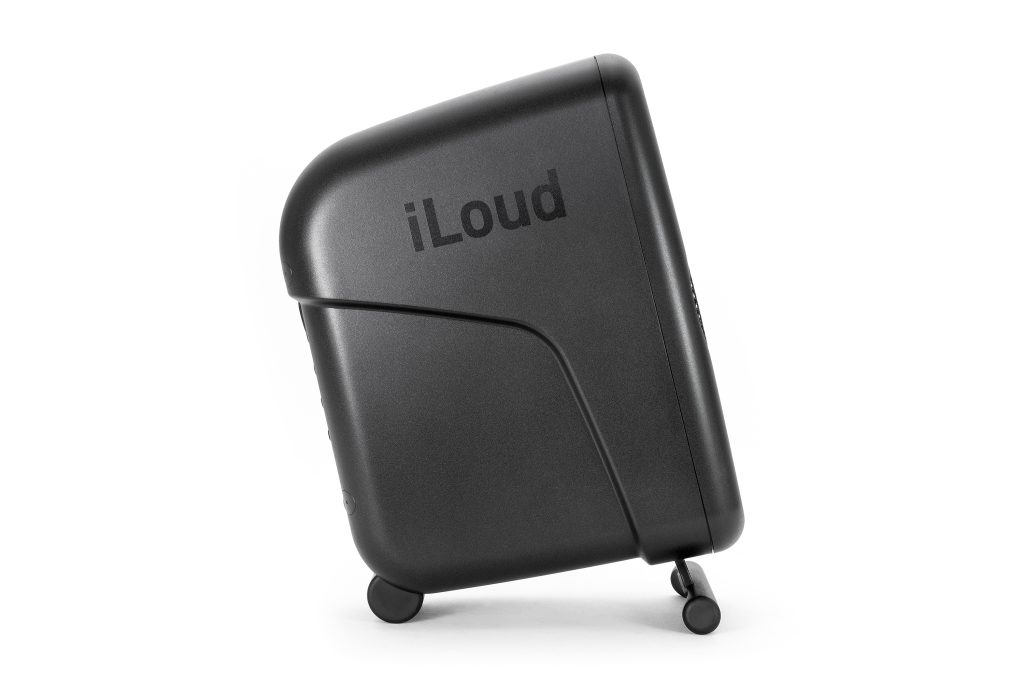
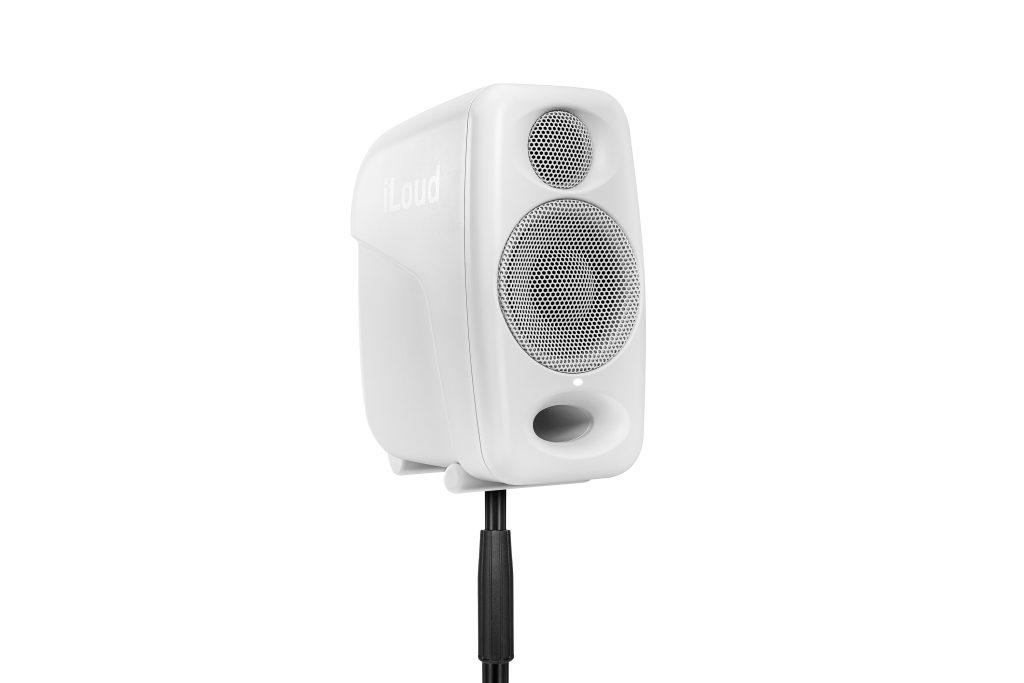
Sound Check
Testing the iLoud Micro Monitor Pro across different desk setups and near-field listening environments revealed what you’d expect from a product carrying the “Pro” label—tighter bass, less coloration, and more accurate imaging than its predecessor. Even at higher volumes, there’s zero distortion. The soundstage is wide but coherent—critical details remain front and center without being fatiguing.
They’re still small. Still desktop-friendly. But now? They’re unmistakably monitor-grade.
Are Monitors, Speakers?
All audio monitors are speakers, but not all speakers are monitors. For those of you who are new to the topic, audio monitors provide accurate, uncolored, flat sound for mixing music, editing podcasts, or critical listening—revealing every detail. Quality consumer speakers can sound great, but they prioritize fun and casual enjoyment. They often colour the sound to enhance bass and treble—like the JBL Charge 5, which boosts lows and highs, or the Sonos One, known for its full-bodied sound. Apple’s HomePod offers an immersive and spatial audio experience. These are great for entertainment, but not ideal when you need pinpoint accuracy.
Final Thoughts
If you loved the original iLoud Micro Monitor, the Pro version will feel instantly familiar—but with a plethora of enhancements you didn’t know you were missing. They’ve dropped some creature comforts like Bluetooth but more than make up for it with smart studio tools and better sonic performance. This isn’t just an upgrade—it’s a serious tool for those who need to trust what they’re hearing.

IK Multimedia could’ve coasted on the success of the original iLoud Micro Monitor. Instead, they built on it. The iLoud Micro Monitor Pro fills the gap between high-end desktop audio and professional nearfield studio monitoring.
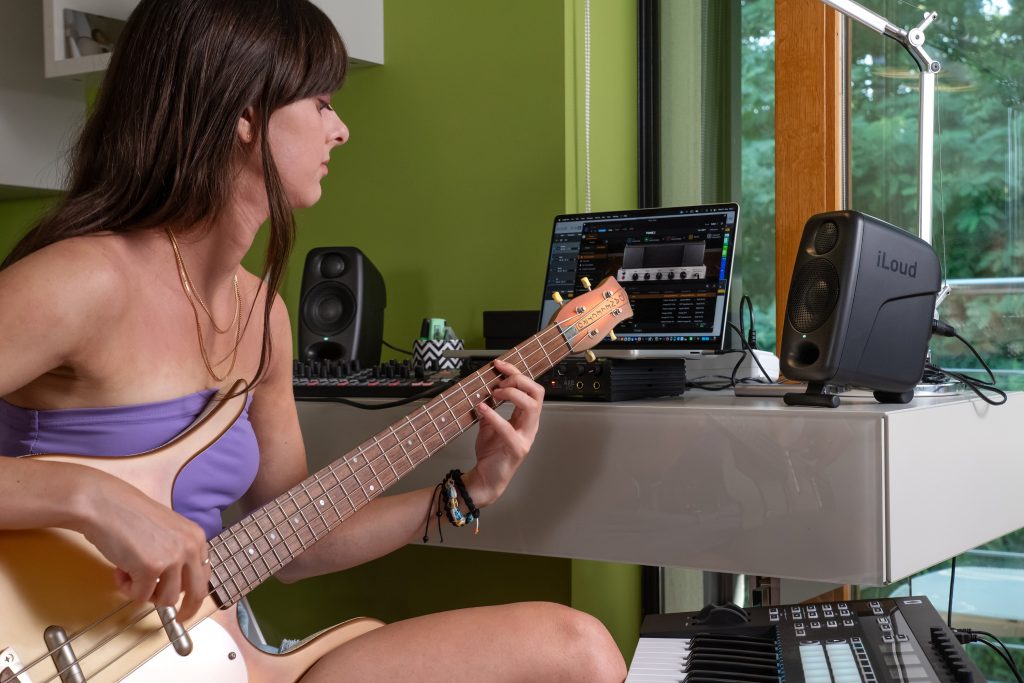
If you’re a podcaster, music producer, content creator—or an audiophile hobbyist, or simply someone serious about sound—the Pro version delivers what the originals only hinted at: true reference monitors in a deceptively small package that you can use anywhere, even in less-than-ideal listening environments.
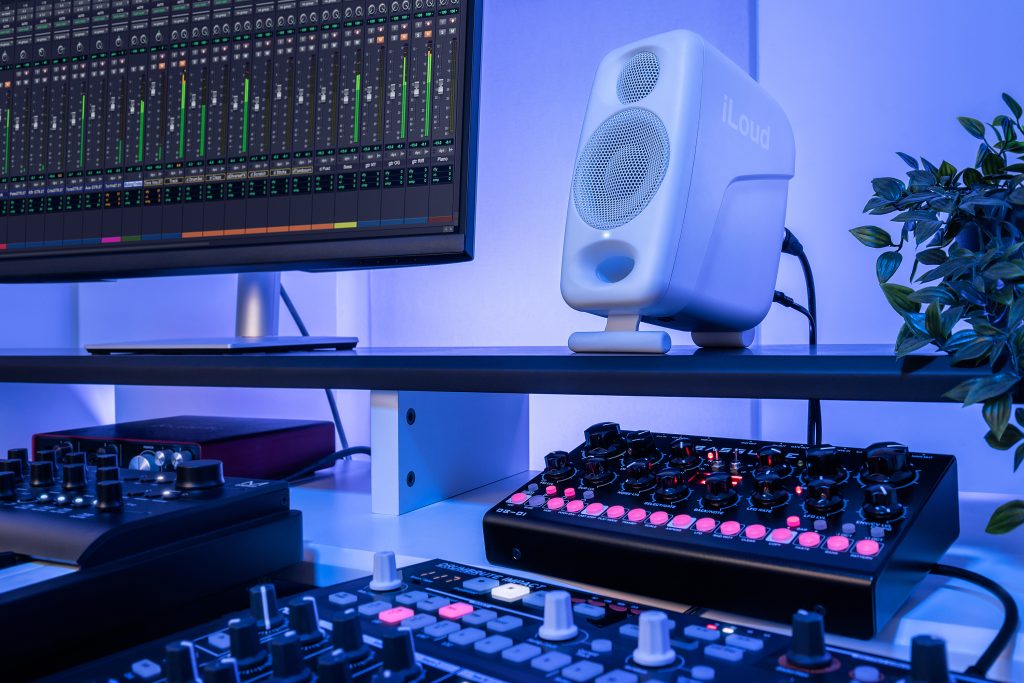
The iLoud Micro Monitor Pro by IK Multimedia is available in either black or white. It comes in various configurations including a single unit ($299.99 US / $391.99* CAD), or a pair ($599.99 US / $783.99* CAD) —which also includes the ARC Measurement Mic – which also can be purchased separately.
You can buy them directly from IK Multimedia. For locations in Canada, you can also find them at *Long & McQuade and *Best Buy, or check with your favourite outlet.
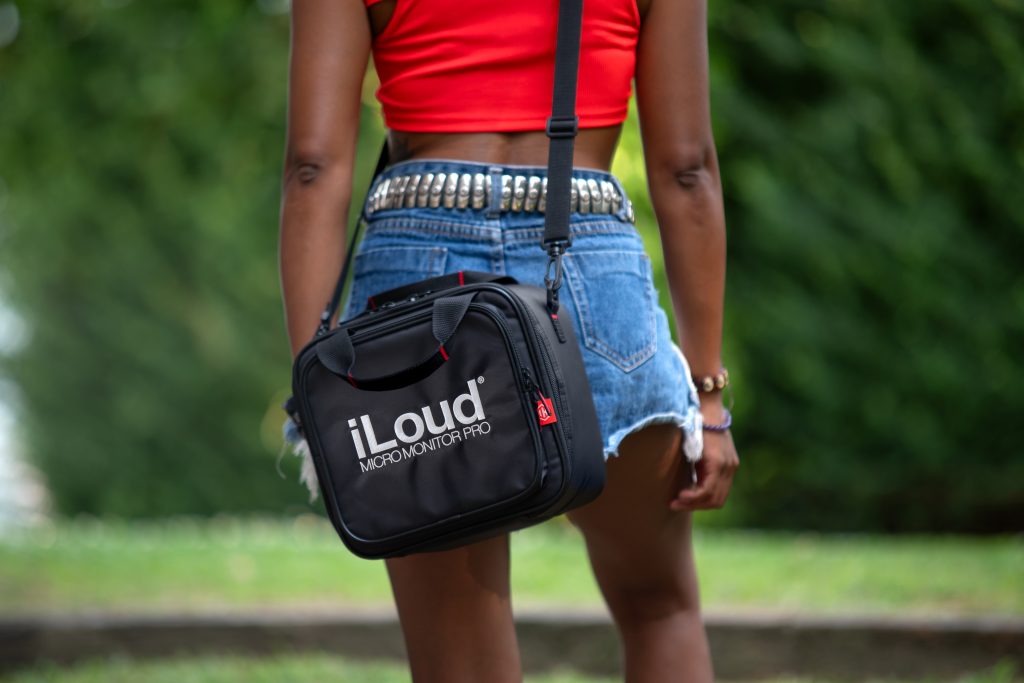
As the late great Steve Jobs always said—”there’s one more thing.” Now available as an option for the road warrior is a padded iLoud Micro Monitor Pro Travel Bag ($49.99 US) designed specifically to hold a pair—something I had requested back in 2016. 🙂
For more info, visit IK Multimedia. You can view the full specs here.
GadgetGreg Rating: ★★★★¾ (4.75/5)
Watch out for a future video and podcast on the IK Multimedia iLoud Micro Monitor PRO.
The syndicated edition of the article will appears at Troy Media and 32 affiliated syndicated sites. Podcasts (when available) also appear at either Toastcaster.com or Toastmasters Podcast.com.
Greg Gazin, also known as the Gadget Guy and Gadget Greg, is a syndicated veteran tech columnist, communication, leadership and technology speaker, facilitator, blogger, podcaster and author. Reach him @gadgetgreg or at GadgetGuy.ca.
@ikmultimedia, #iloudmicromonitorpro, #roomEQ, #IKartist2025, #ikmultimedia